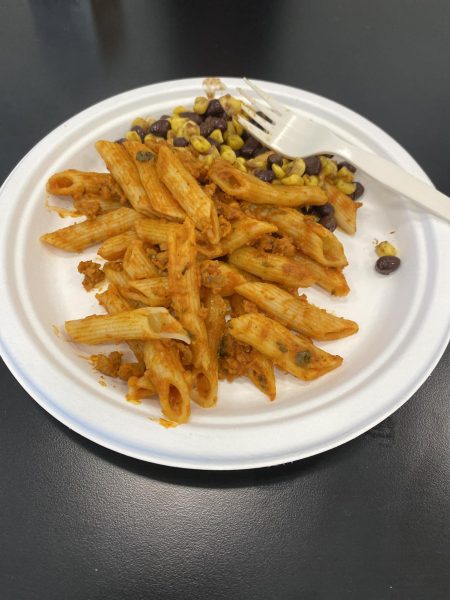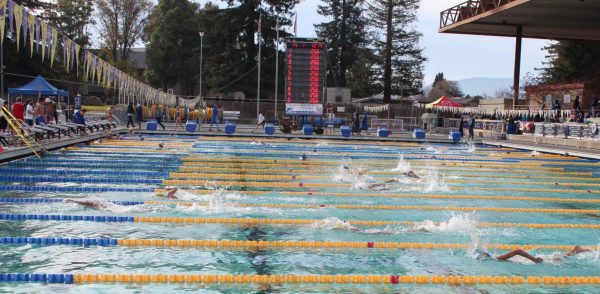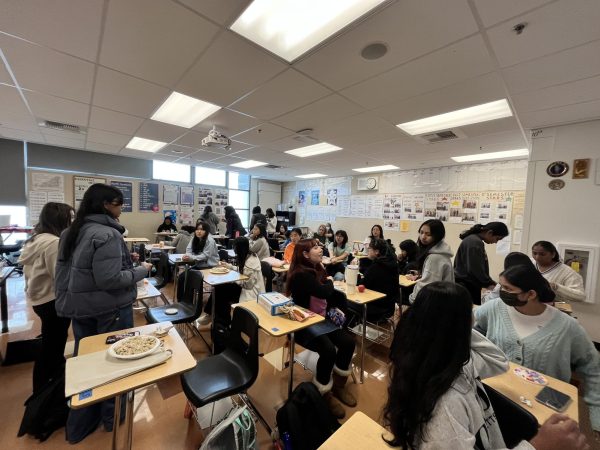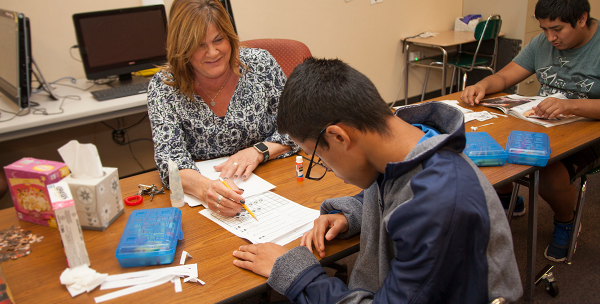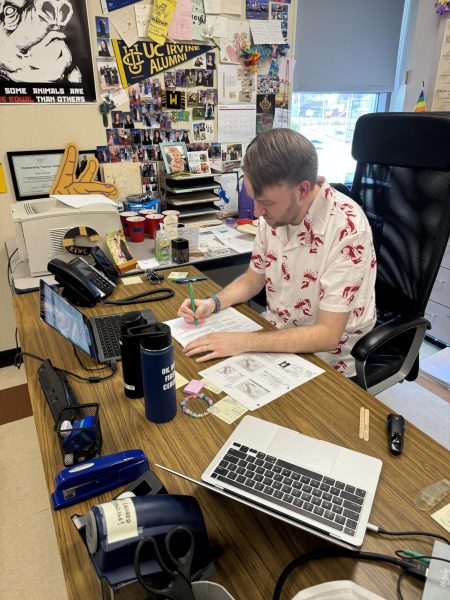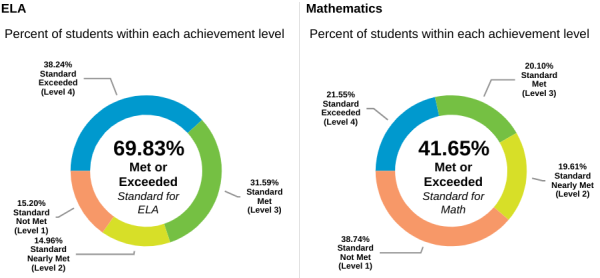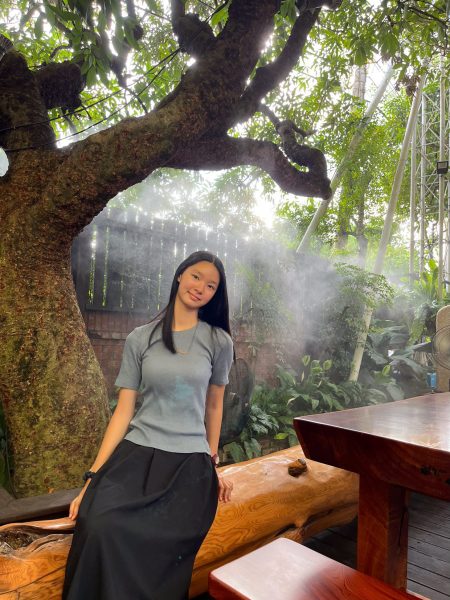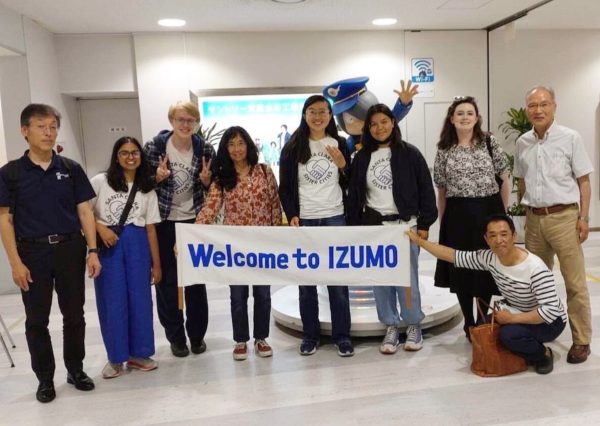The Road to Bike Safety
It was a perfect day for a ride, as the third annual “Library to Library” bike ride started. With a large group of almost forty people, bikers were relatively safe intermingling with the traffic in the Sunnyvale-Cupertino area since their sheer numbers provided a bulwark against busy traffic. Unfortunately, this is not the case for many frequent bikers. Whether for sport or transportation, many bikers do not enjoy the safety and luxury of a large biking group. Especially on risky roads or in bad weather, bikers may find themselves in hazardous situations with traffic or even in an accident.
Though group cycling is a great precaution against death by car, many other things can contribute to the safety and wellbeing of a cyclist on the road too. Bike awareness programs, educational community bike rides, and especially accommodations such as bike lanes all help to achieve this goal of a nice ride in the neighborhood.
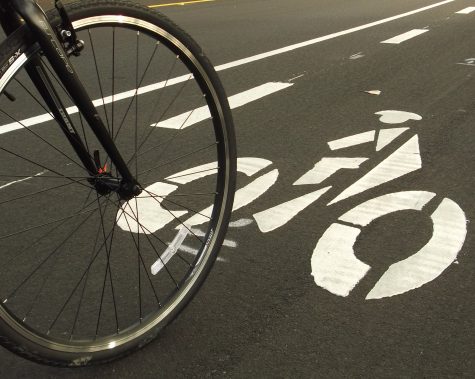
On Calabazas Boulevard, which runs along the eastern perimeter of the Wilcox campus, a system of bright green bike lanes, with a three-foot-wide margin separating them from vehicle lanes, leads student cyclists to school. This road is an alternative to taking Monroe Street to school, which can become very scary, especially when traffic starts to congest. With busy school traffic on weekday mornings, green bike lanes like the ones on Calabazas Blvd. are a relief from the many dangerous and crowded roads in the Sunnyvale-Santa Clara Area.
Getting from one place to another by bike at all is becoming increasingly harder because of construction and the increase of residents in the area.
Many bike lanes that cyclists need on roads purely for traffic reasons do not have them, or have narrow lanes which are very different from those on Calabazas. Finding safe bike routes for a ride is more difficult than typing two addresses into Google maps, especially when your destination is farther away. Rather than listening to Google’s directions of taking a route straight down Lawrence Expressway alongside cars racing by at sixty miles per hour, taking a longer route using trails and roads with bike lanes is probably a better choice.
Bike programs for everyone, including students, also help to promote awareness and education for local bikers. Many of these programs are hosted by the SIlicon Valley Bike Coalition (SVBC). The SVBC is the main bike advocacy organization in the Bay Area, whose mission is to “create a healthy community, environment, and economy through bicycling for people who live, work, or play in San Mateo and Santa Clara Counties.” The SVBC works to promote safe and accessible cycling as a form of green transportation to everybody everywhere, encouraging people to bike wherever they can. They do this not only for the environment, but also to foster a culture where both bikes and cars can coexist on the same road together.
In addition to creating and hosting neighborhood-friendly events and holding meetings discussing the furtherment of cycling for transportation, the SVBC also campaigns for propositions like Measure B to increase resources for cyclists.
Measure B is a sales tax that bike advocacy programs have been working on for almost two years. By raising sales taxes by a quarter of a percent, the measure is able to harness up to $250 million to “fund a variety of transportation projects, including BART Phase II, Caltrain improvements, highway interchanges, expressway projects, bus service, and bike and pedestrian projects,” writes Colin on the SVBC blog. This includes filling potholes on freeways, improving public transportation, and making more bike lanes for safety, especially near schools. For the SVBC and Bay Area bikers, this would be a major win, promising funds that would only be used for transportation needs within the Bay Area and could not be taken away by the state.
As time passes, bike safety is becoming a concern to the growing community of neighborhood bikers in the Sunnyvale-Santa Clara area. With traffic increasing due to construction, bikers have to find new ways to stay safe, whether it is forming advocacy groups, spreading awareness about bicyclist safety, or helping the community by passing measures like Measure B to maximize safety and security for cyclists on the road.

